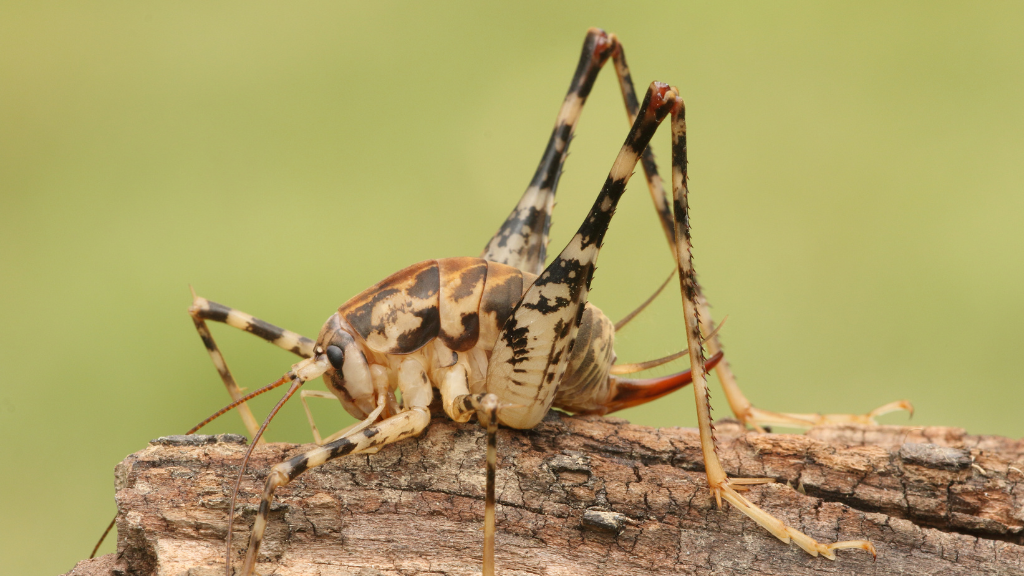Blog
How to Get Rid of Spider Crickets: Easy Steps

Have you ever seen a strange, spider-like bug hopping around your basement or garage? If so, you’re not alone. These creatures, called spider crickets, often surprise homeowners with their long legs and random jumps. But don’t worry—even though they look scary, there are simple ways to keep them out of your home for good.
In this easy-to-follow guide, you’ll learn all about spider crickets: what makes them unique, why they show up, and how to get rid of them. From quick DIY fixes to professional help, we’ve got all the advice you need to make your home free of spider crickets. Let’s dive in!
The Truth About Spider Crickets:
What Are Spider Crickets?
Spider crickets aren’t spiders or real crickets. They belong to the insect family Rhaphidophoridae and are closer relatives of katydids. Their spider-like looks and cricket-like hops gave them their unusual name.
Different Names for Spider Crickets
These bugs go by many names around the world, including:
| Name | Why They’re Called This |
|---|---|
| Spider Cricket | Looks like a spider |
| Cave Cricket | Lives in dark, damp places |
| Camel Cricket | Has a humpback shape like a camel |
| Spricket | A mix of “spider” and “cricket” |
| Cave Weta | Common name in New Zealand |
Quiet but Surprising
Unlike regular crickets, spider crickets don’t chirp. They don’t have the wing structures needed to make sounds, so they move quietly.
They Don’t Bite, But…
Spider crickets can’t bite people, but their strong jaws might:
- Chew on fabrics and other household items.
- Nibble on your skin if they land on you (rare and harmless).
- Damage stored items like paper and cardboard.
Tough Survivors
Spider crickets eat many things, including:
- Fungi
- Plants
- Clothes and fabrics
- Even other insects (sometimes their own kind!)
Why Are Spider Crickets in Your Home?
They Like Moisture
Spider crickets love damp, dark areas like basements, crawl spaces, and garages with high humidity.
They Prefer Darkness
These insects hide in dark, quiet spots to avoid predators. Cluttered spaces are their favorite hiding places.
They Need Food
Homes provide lots of food for spider crickets, from clothes to fungi growing in damp corners.
Common in Humid Areas
Spider crickets are most common in the eastern U.S. but can live anywhere with enough humidity.
How to Get Rid of Spider Crickets: Easy Steps
1. Reduce Moisture
Use a dehumidifier to lower indoor humidity to below 50%. This makes your home less appealing to spider crickets.
2. Declutter Your Space
Get rid of clutter where spider crickets can hide by:
- Removing cardboard boxes.
- Tidying up storage areas.
- Recycling old newspapers or magazines.
3. Set Sticky Traps
Place sticky traps near walls, in corners, and around possible entry points. These traps are an easy, non-toxic way to catch them.
4. Use Soapy Water Bowls
Put shallow bowls of soapy water where you see spider crickets. They’re drawn to the water but can’t escape because of the soap.
5. Vacuum Often
Vacuuming removes spider crickets and their eggs. Pay special attention to:
- Baseboards
- Rugs and carpets
- Closets and corners
- Under furniture
Empty the vacuum outside right after you use it.
6. Call a Pest Control Expert
If DIY fixes don’t work, pest control services can help by:
- Sealing entry points.
- Using insecticides in problem areas.
- Giving long-term prevention tips.
Stop Spider Crickets for Good:
Seal Your Home
Block gaps around doors, windows, and other entry points with weather stripping, caulk, or screens.
Keep Things Dry
Make basements and crawl spaces dry by using fans or opening vents for better airflow.
Dim Outdoor Lights
Spider crickets are attracted to light. Use motion-activated lights or fewer outdoor lights to keep them away.
Let Nature Help
Encourage natural predators like birds, lizards, or spiders to help control spider cricket numbers
FAQs About Spider Crickets:
Are Spider Crickets Dangerous?
No, they’re not harmful to people. They don’t bite or spread diseases but may damage fabrics and stored items.
How Long Do Spider Crickets Live?
Their life spans range from 1-2 years with these stages:
- Egg: 2-3 weeks
- Nymph: 5-6 months
- Adult: 6-12 months
What Attracts Them to Homes?
Moisture, darkness, and food like fabrics and fungi bring spider crickets indoors.
Conclusion: Reclaim Your Space
Spider crickets may look creepy, but you don’t have to live with them. Understanding their habits and using simple strategies can help you get rid of them and keep them out. Regular cleaning, fixing damp areas, and sealing entry points can make a big difference. If they’re still a problem, don’t hesitate to call the experts.
With these steps, you’ll say goodbye to spider crickets and enjoy a more comfortable, pest-free home!
For More Articles: Insider Magazine
-

 Blog5 months ago
Blog5 months agoTraceLoans: What They Are and Why They Matter
-

 Home Improvement5 months ago
Home Improvement5 months agoCreate a Pretty Wooden Porch with Flowers
-

 Blog4 months ago
Blog4 months agoHow to Split 25k Evenly on Debt Cards Online
-

 Blog5 months ago
Blog5 months agoJoin MyLiberla.com – Connect and Grow Today!
-

 Blog5 months ago
Blog5 months agoPink Dragon Fruit vs. White Dragon Fruit: What’s the Difference?
-

 Home Improvement3 months ago
Home Improvement3 months agoPopular House Colors: 7 Trending Exterior Paint Shades for 2026
-

 Home Improvement5 months ago
Home Improvement5 months agoSleigh Bed Glasgow: Elegant & Stylish Beds for Your Bedroom
-

 Lifestyle5 months ago
Lifestyle5 months agoHow to Clean Toyota Interior Plastic Door Panels



